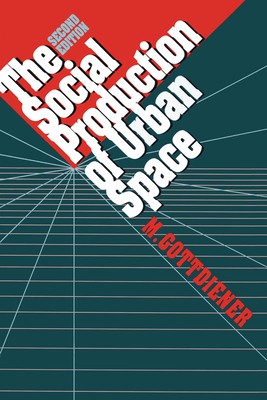
- We will send in 10–14 business days.
- Author: M Gottdiener
- Publisher: University of Texas Press
- Year: 1994
- ISBN-10: 0292727720
- ISBN-13: 9780292727724
- Format: 14.8 x 22.7 x 2.5 cm, softcover
- Language: English
- SAVE -10% with code: EXTRA
Reviews
Description
From reviews of the first edition:
This is perhaps the best theoretically oriented book by a United States urban sociologist since the work of Firey, Hawley, and Sjoberg in the 1940s and 1950s.... Gottdiener is on the cutting edge of urban theoretical work today. --Joe R. Feagin, Contemporary Sociology
Since its first publication in 1985, The Social Production of Urban Space has become a landmark work in urban studies. In this second edition, M. Gottdiener assesses important new theoretical models of urban space--and their shortcomings--including the global perspective, the flexible accumulation school, postmodernism, the new international division of labor, and the growth machine perspective.
Going beyond the limitations of these and older theories, Gottdiener proposes a model of urban growth that accounts for the deconcentration away from the central city that began in the United States in the 1920s and continues today. Sociologists, political scientists, economists, geographers, and urban planners will find his interdisciplinary approach to urban science invaluable, as it is currently the most comprehensive treatment of European and American work in these related fields.
EXTRA 10 % discount with code: EXTRA
The promotion ends in 12d.06:35:04
The discount code is valid when purchasing from 10 €. Discounts do not stack.
- Author: M Gottdiener
- Publisher: University of Texas Press
- Year: 1994
- ISBN-10: 0292727720
- ISBN-13: 9780292727724
- Format: 14.8 x 22.7 x 2.5 cm, softcover
- Language: English English
From reviews of the first edition:
This is perhaps the best theoretically oriented book by a United States urban sociologist since the work of Firey, Hawley, and Sjoberg in the 1940s and 1950s.... Gottdiener is on the cutting edge of urban theoretical work today. --Joe R. Feagin, Contemporary Sociology
Since its first publication in 1985, The Social Production of Urban Space has become a landmark work in urban studies. In this second edition, M. Gottdiener assesses important new theoretical models of urban space--and their shortcomings--including the global perspective, the flexible accumulation school, postmodernism, the new international division of labor, and the growth machine perspective.
Going beyond the limitations of these and older theories, Gottdiener proposes a model of urban growth that accounts for the deconcentration away from the central city that began in the United States in the 1920s and continues today. Sociologists, political scientists, economists, geographers, and urban planners will find his interdisciplinary approach to urban science invaluable, as it is currently the most comprehensive treatment of European and American work in these related fields.


Reviews